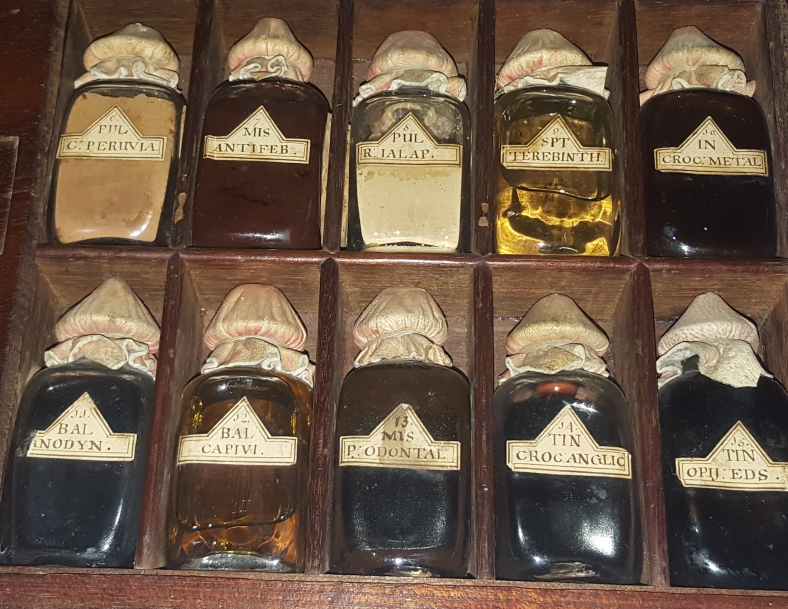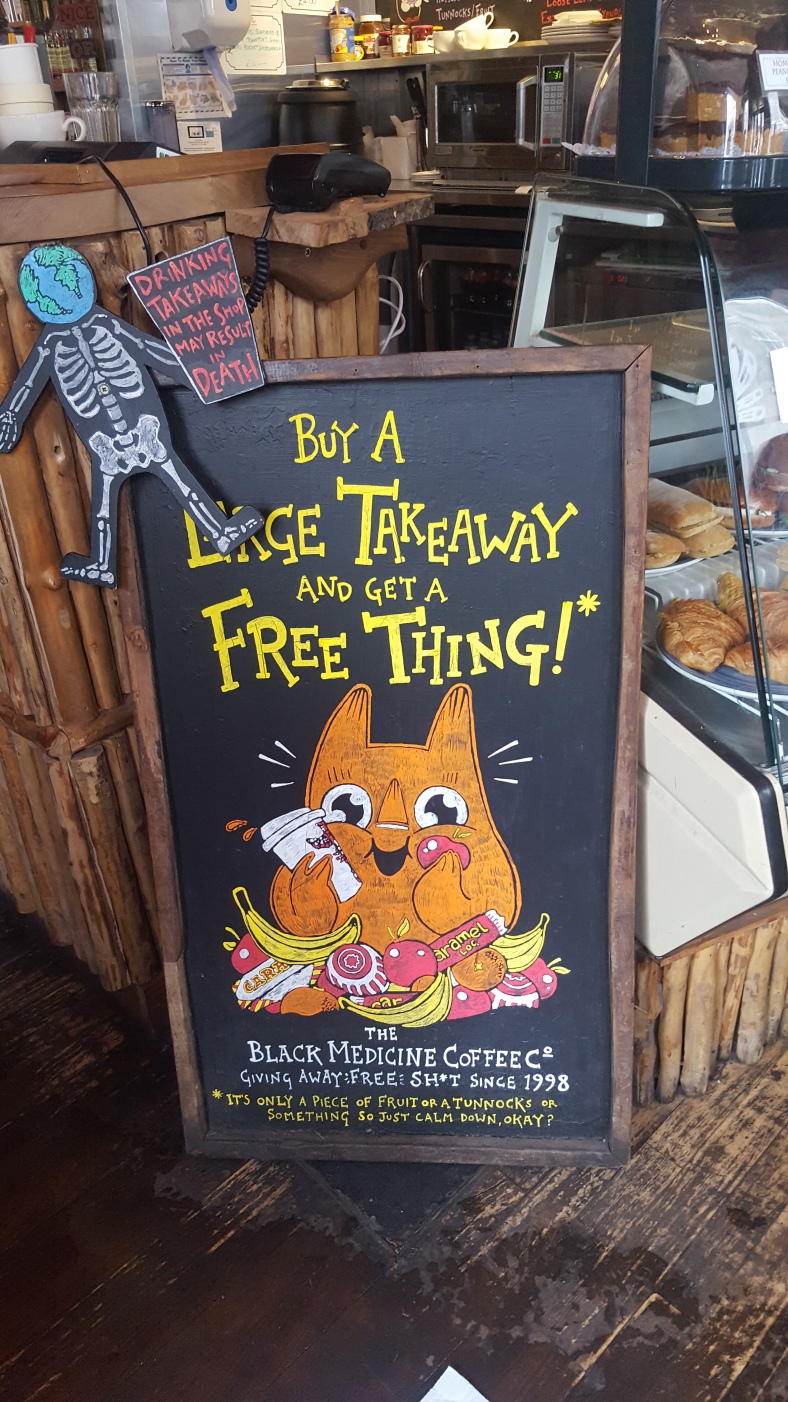New Weapons, New Wounds: Medicine in War and Rebellion is the Royal College of Physicians Edinburgh’s contribution to Edinburgh’s International Science Festival. The event is running 3-5 April at the Royal College. The event focused on medicine’s relationship with war and featured talks on shell shock, the dual duty of field medics, the evolution of the field kit and venereal disease within troops. What made this event stand out from other RCPE events I’ve attended was the dynamic way the talks were presented; attendees were split into four groups and at the ringing of a bell, shuttled to different areas of the building for each talk. This allowed each presenting academic to fill their station with displays of relevant books and artefacts and gave guests the opportunity to explore the college and its stunning decor.

The first talk I attended was by Napier lecturer and author, E.S Thomson, and discussed the diagnosis and treatment of ‘shellshock’ during WWI. Despite being a lecturer at Napier University, where the building of the famous Craiglockhart Hospital still stands, Thomson only briefly mentioned its most well-known patients, the war poets Siegfried Sassoon and Wilfred Owen. Thomson argued that there is perhaps too much focus on the war poets link to the hospital which ignores the larger context writing war poetry had within Dr Arthur Brock’s ‘Shell Shock’ treatment. This certainly mirrors my knowledge of Craiglockart, which I acquired by studying Pat Barker’s 1991 novel Regeneration which explores Owen and Sasson’s relationship and treatment by the now renowned psychiatrist W.H.R Rivers. ‘Shell shock’ or what we would now term P.T.SD. Hysteria, a traditionally female illness, did not fit as a diagnosis for these men who were debilitated in the most masculine of pursuits, and so neither did Weir Mitchell’s ‘bed rest cure.’ (Although those who have read Perkins Gilmore’s The Yellow Wallpaper may argue that Weir Mitchell’s treatment was equally as useless for treating women!) Thomson’s talk charted the attempts of healthcare professionals to define, name, and treat the psychological trauma sustained by those who witnessed the horror of the trenches.

Illustrations showing a single bullet wreaking enormous havoc by perforating the small intestine.
Next up was a talk by PhD candidate Sam Klein of The University of St Andrews. I found this talk particularly interesting as I had never considered its subject matter before. This segment highlighted the complexities of providing medical care during wartime. Usually, on some basic level, the interests of a health provider and their patients are same – they want the condition of their patients to improve and, if that is not possible, provide sufficient palliative care. During wartime, a doctor is not only accountable to his patients but to the War Office and this inevitably has repercussions for the patient. An example Klein gave was the way in which the triage process is reevaluated. Usually, triage is quite egalitarian – those whose are most in need, whose life hangs in the balance are prioritised. However when under the pressure, triage on the field becomes more utilitarian in efforts to fit with military principles. Those who can be treated in the shortest time are prioritised in an effort to ensure a higher number of active soldiers than the enemy. For example in WWI, 5 patients could be treated per patient with an abdominal or chest wound and so these patients were at an extreme disadvantage. Therefore despite needing urgent care, patients with a chest or abdominal wound were pushed further down the list. For me, the most interesting aspect of this talk was the consideration of how the ethos of medicine, which dates back millennia, does not exist in a vacuum and as a result must interact with politics, bureaucracy and circumstance.

In the beautiful blue coloured Cullen Room, Prof Angela Thomas OBE showed us the medicine chest of Bonnie Prince Charlie. This was an amazing artefact and being allowed to interact with it and see it up so close was such a great experience. The design of the cabinet is deceptively intricate with compartments that pop out when pressed and multiple drawers containing all manner of substances. These would be used to make poultices, liniments and potions for whatever ailment was troubling a patient. As well as looking like something that belongs in a magician’s or alchemist’s study, the chest was a great artefact to springboard discussion concerning the advancement of medicine and the evolution of military medical kit. A large amount of the substances within the cabinet were botanical (although the chest does feature a ground insect or two!) and were made by grinding up or treating plants and roots. Since the 1700’s many of the active ingredients of these plants have been identified and used in modern medicine. Seeing this chest in person also highlighted the how difficult it must have been to use in a war zone. The chest is made of lead and wood and is enormously heavy. It is hard to imagine it being used to treat the wounded during the Jacobite uprising. Field kits which soldiers carry today are only 1lb and there is now an onus on soldiers being trained to carry out immediate first aid on themselves and their peers whilst waiting for medical attention. The 40 hours first aid training which all soldiers now receive has drastically improved survival rates of those wounded in battle.

Finally, Mona O’Brien, a doctoral scholar at the University of Glasgow, gave a talk about the history of venereal disease in the military. Specifically, she talked about syphilis, which is one of my favourite diseases of all time from both an etiological and sociological point of view. Syphilis has always been linked to the military with outbreaks being linked to the movements of troops for centuries. One of the most interesting aspects of O’Brien’s talk was the examination of military attitudes to syphilis and how they contributed to the spread of the disease. For centuries blame was attributed to the women soldiers had sex with and this blatantly ignored the fact that armies left outbreaks in their wake. This led to acts such as the Contagious Diseases Act which allowed the forcible internal examination of any woman suspected to be a prostitute or of having VD. If deemed to have a venereal disease, a woman could be essentially locked away and confined. These acts did nothing to stop the spread of syphilis and instead were a method of shaming and punishing the vulnerable. Syphilis was even a major issue during WWII, Winston Churchill himself instructed supplies of penicillin to be diverted from the wounded to soldiers who found themselves inflicted with syphilis. A personal highlight of this talk was talking to O’Brien about William Clowes, a royal physician on whom I wrote extensively in my dissertation.
The talks themselves all approached the relationship between the military and medicine through different angles and provided a time travelling and comprehensive exploration of the subject. The range of artefacts and books on display was also impressive and was definitely one of the best features of the event for me! The dynamic structure of the event allowed attendees to see the beauty of the college building as well as ensuring our brains were awake. By moving around to different locations, I felt like I was able to absorb a lot more information than I would if I had just sat in the main hall for four talks.
To summarise, this event was one of the best heritage events I’ve ever been to and I hope this format is adopted for future talks!







